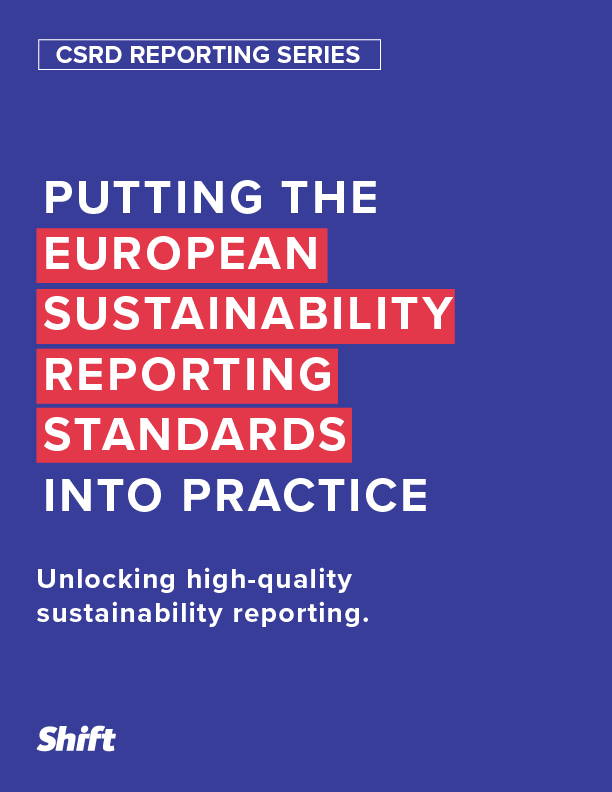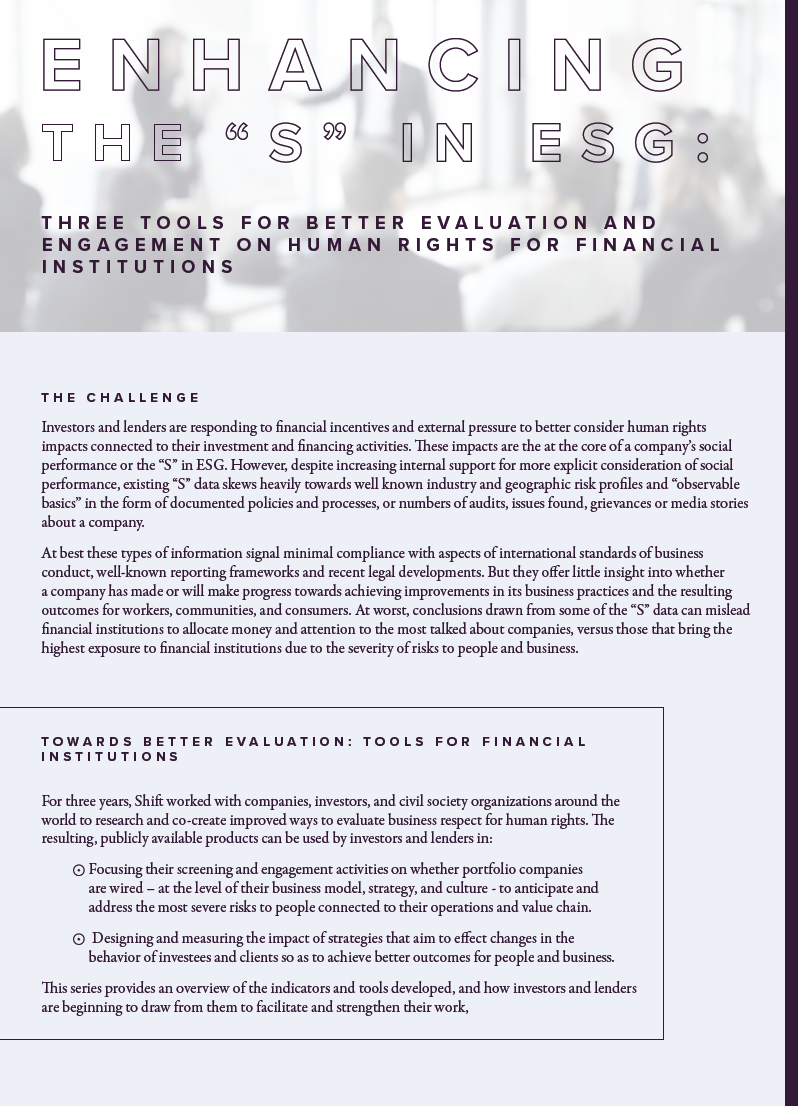These remarks were originally delivered by Professor John Ruggie at the Event “The S in ESG: Best Practices and the Way Forward?“, on July 1, 2021. The event was co-organized by Shift, FrankBold and the Thomson Reuters Foundation.
ESG investing morphed out of the Socially Responsible Investment movement. The concept of ESG was first introduced in a UN Global Compact Report, ‘Who Cares Wins: Connecting Financial Markets to a Changing World’. It served as the background document for the 2006 launch by then Secretary-General Kofi Annan of the Principles for Responsible Investing (PRI), now an independent entity whose 3,000 signatories have more than $100 trillion in assets under management.
Initially, ESG investing was a niche product, rising ever-so slightly year-on-year. But it turned up like a hockey stick in the wake of the 2008 financial crisis. It hasn’t stopped its rise since, now accounting for more than one-third of all assets under management globally. This suggests that growing numbers of investors are concerned that mainstream finance is incapable or unwilling to do future-oriented heavy lifting.
Today, every major international standard setting body is rushing in to develop robust standards for the E in ESG, including the IFRS and IOCSCO. Standards are also being developed under the EU Green Deal.
The first instinct was to concentrate exclusively on the E in ESG, and then come back to work on the S. But pressure against this incremental approach has also put standards for the S, in some form, on the table. This is highly desirable, but it also raises concerns.
Developing metrics for the E is complex enough. But rough approximations of comparable company data can be produced by combining big data, including from remote sensing technologies, with artificial intelligence. But if the pressure to produce high quality data for the S simply mimics that path, the results will be far more problematic. Why is that, and what can we do about it?
The S is about risks to people. Some of these are readily quantifiable: what is the health and safety record in your operations? Others are harder: was the indigenous community in whose lands you’re opening a copper mine consulted? Was it adequately compensated? And harder still, how should we measure Facebook’s role in the genocidal attacks on the Rohingya people in Myanmar? Facebook had no staff on the ground to understand local ethnic conflicts, yet it opened its platform widely to all comers spreading hate speech and inciting violence.
In short, measuring the S in many instances is far more difficult and not amenable to tick-box exercises that businesses yearn for. What is to be done? That’s a long story. I can address just two points here.
The first concerns the concept of materiality. I agree with U.S. Securities and Exchange Commissioner Allison Herren Lee, who considers the belief that ESG disclosure rules must pass a materiality test to be a myth. As she puts it, it is “legally incorrect and historically unsupported.” Indeed, a recent academic study reported in the Wall Street Journal found that “CEOs who riled shareholders on social issues were more likely to receive compensation penalties and be fired than when shareholders were unhappy about wealth-oriented actions.”
In short, materiality doesn’t get you far enough. Companies must identify and address serious risks to people that their activities and relationships may pose. Those may become material risks in the narrow sense, but by then great harm to people may already have been done.
Materiality doesn’t get you far enough. Companies must identify and address serious risks to people that their activities and relationships may pose. Those may become material risks in the narrow sense, but by then great harm to people may already have been done.
My second point concerns how investors and operating companies can be expected to identify such risks. Financial risks, of course, are assessed through a due diligence process. So why not for the S in ESG? Companies can employ the human rights due diligence process prescribed in the UN Guiding Principles on Business and Human Rights. It has served as the global soft law standard for the past decade and is now being incorporated into European Union hard law – applicable to any business above a certain size operating in the EU’s internal market, irrespective of nationality.
Human rights due diligence is not transactional, but an ongoing process. It includes assessing actual and potential adverse impacts on people, integrating and acting on the findings, tracking the effectiveness of responses, and communicating how the impacts are addressed. It is difficult to imagine how this could be done adequately without engaging at-risk stakeholders, or, where that it not possible, their legitimate representatives or subject matter experts.
So, my message to you today is that we need to think of the S in ESG as addressing the people dimension of sustainability, which in turn requires more qualitative metrics and more sophisticated AI than the E. That’s why an EU advisory body has recommended that “socially sustainable activities should be underpinned by existing global guidelines” such as the UN Guiding Principles, among others.
In the end it all comes down to this: measure what matters, not merely what is easily measured.
Thank you, and I look forward to the discussion.
 By John Ruggie
By John Ruggie


